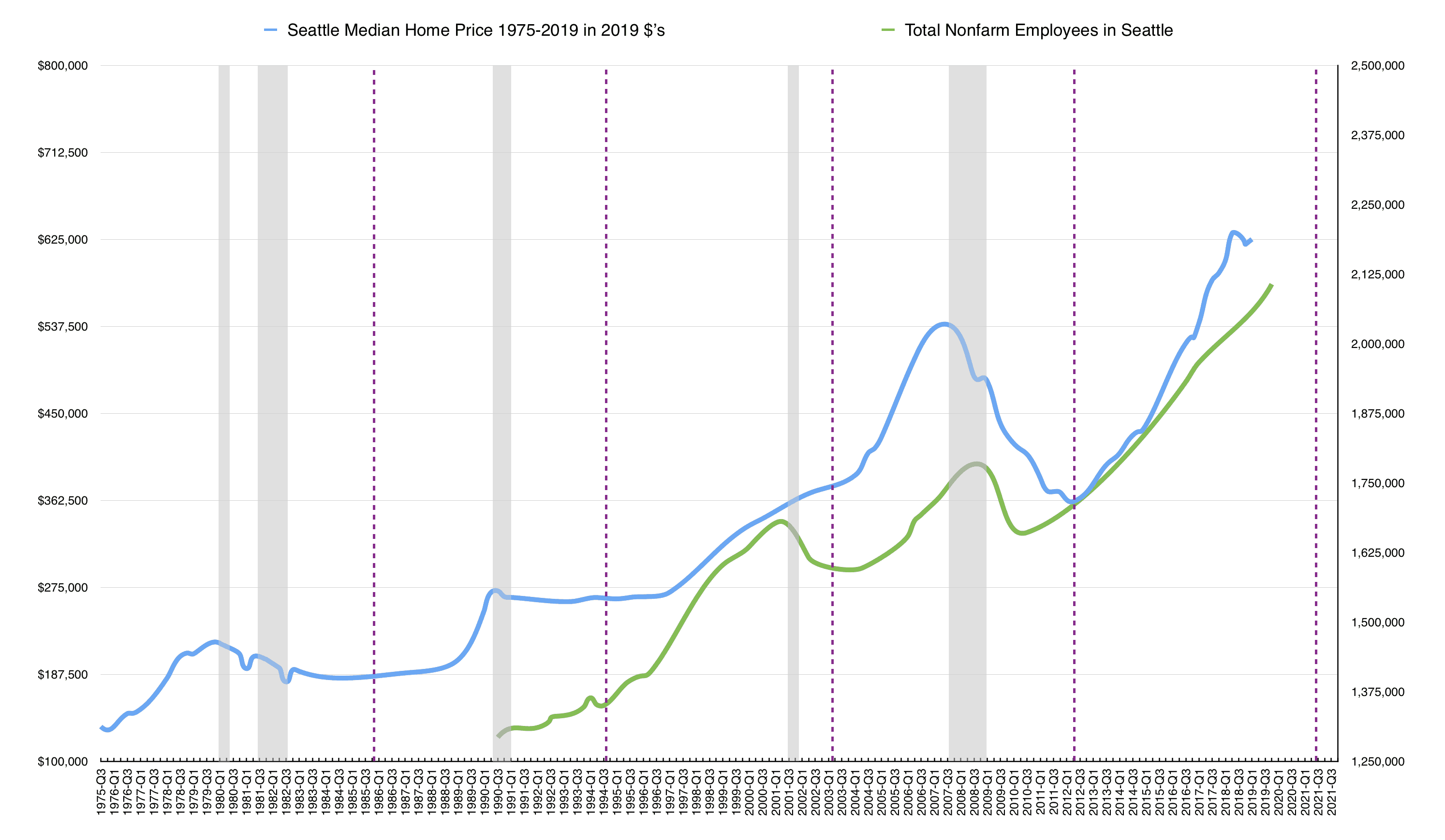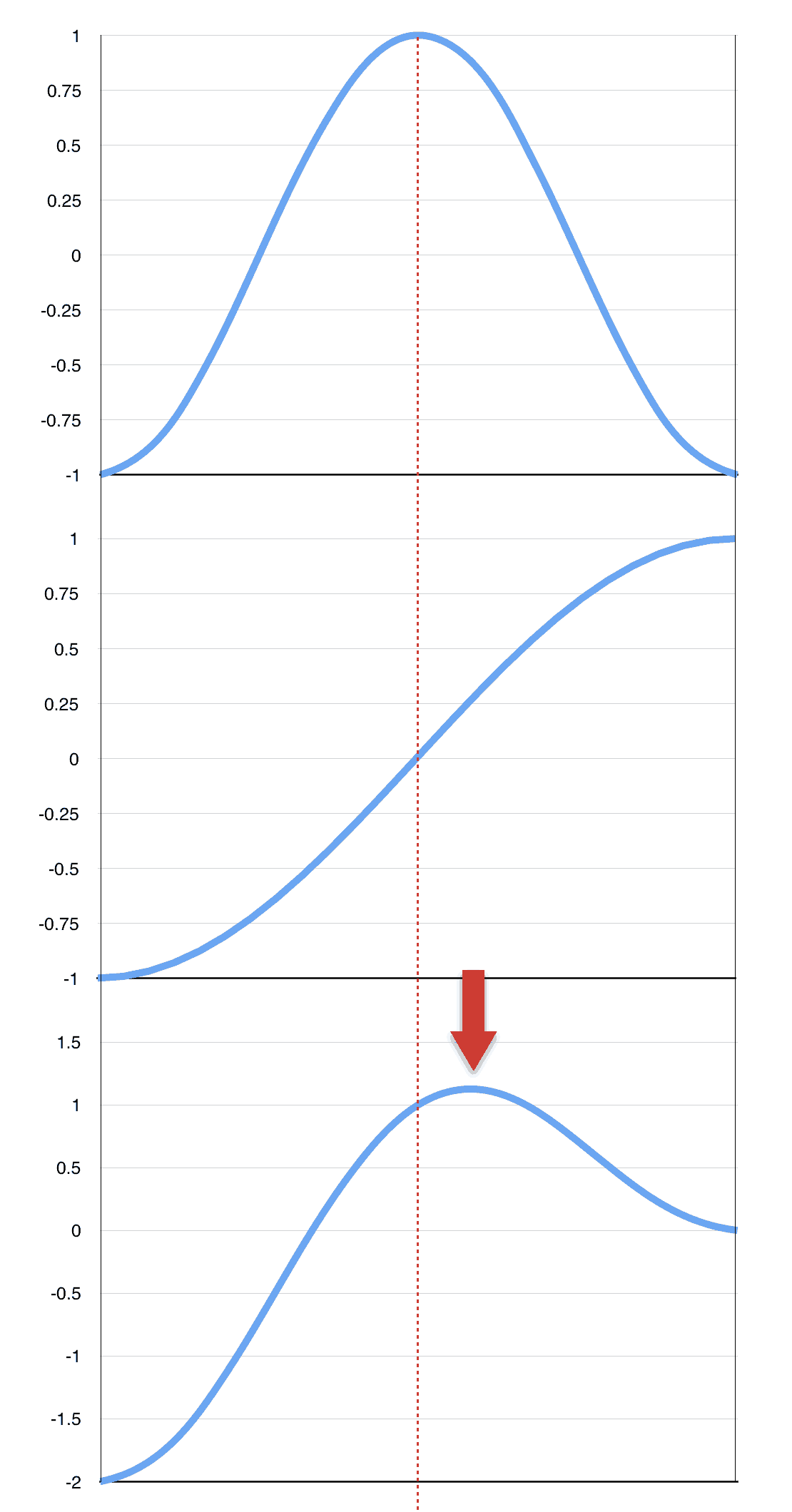There’s been a lot of talk about being late in the real estate cycle recently, but what exactly is the timing of this cycle and how does it pertain to the Greater Seattle region?
The 18 year real estate cycle, popularized by Roy Wenzlick in 1943 has been a phenomenon observed as far back as 1795. Wenzlick showed a very pronounced cycle of peaks and troughs in real estate activity that repeats approximately every 18.3 years (below).
Figure 1 : 18 Year Real Estate Cycle by Roy Wenzlick - Source: Foundation for the Study of Cycles
Based on the extrapolation of this chart, the theoretical lows should occur in October of 2007 and Mar of 2026. It is important to note however, that the chart above shows real estate activity as measured by units of sales rather than actual prices. Additionally, while this phenomenon may occur at an aggregate level, local market dynamics can vary considerably.

Figure 2: Median Home Prices in the Greater Seattle region, adjusted for inflation
The chart above shows in blue the median home price in the Greater Seattle area using the FHA All Transactions Price Index, adjusted for inflation using the Personal Consumption Expeditures Index, and scaled to the Q1 2019 median home price as reported by the NWMLS. Major US recessions are overlaid in the vertical grey shaded areas. The vertical dashed bars in purple show the location of the theoretical lows of both the 18 and 9 year cycles, with the 18 year lows being at 2012 and 1994. Adding 18 years to the 2012 low would put the next major low at 2030. However, since the whole cycle should take 18 years, one could argue that the apex should occur 9 years into the cycle, which would put the peak at 2021.
We can see that in the last 18 year cycle from 1994 – 2012 however, that the peak occurred in last third of the cycle, well past the 9 year midpoint. This is actually an indication of a stronger underlying trend and can be described by a phenomenon known as translation.
If an upward trend line is added to a wave such as in the image below (the top chart added to the middle chart below), the peak has a tendency shift or “translate” to the right. This shift can be observed in the 1994 – 2012 cycle, and shows evidence of a strong underlying trend.

Figure 3: Illustration of right translation
While it is important to keep track of where the market cycles are, as they do have a dominating effect on the market as a whole, the fundamental driver of price in any local region will always be supply and demand.
Prior to 1997 and going back to 1946, the Seattle housing market had a fairly predictable pattern of a few years of sharp increase followed by a slightly longer period of stabilization in an almost stair step fashion. After 1997 however, we can see a significant shift in the in the fundamentals of the market. Not surprisingly, this period coincides with the launch of Amazon along with the internet revolution. The shift in market dynamics at this point makes sense as we saw a rapid influx of higher paying jobs in the region causing unprecedented levels of demand for housing.
Figure 4: King County Median Home Prices 1946 - 2007 - Source: seattlebubble.com
Adding employment as a driver to the analysis, the green line in figure 2 shows the trend of total nonfarm employees from 1990 to 2019. During the most recent advance from 2012, we can see that employment growth increased at a similar pace to housing prices. What is interesting to note however, is that the sharp increase in prices from 2004 – 2007 did not coincide with an similar magnitude increase in employment, suggesting that much of that increase was likely due to price speculation rather than underlying demand. The magnitude of the decline here makes sense as there was not sufficient demand to support the increase in prices.
Over the past seven years, we have seen an average employment growth of 52K jobs per year, primarily due to growth in the tech sector. As noted in the Q2 2019 Market Update, with 295K jobs projected to be added to the region by 2024, the strong demand for housing in the Greater Seattle region is likely to continue over the next few years.


